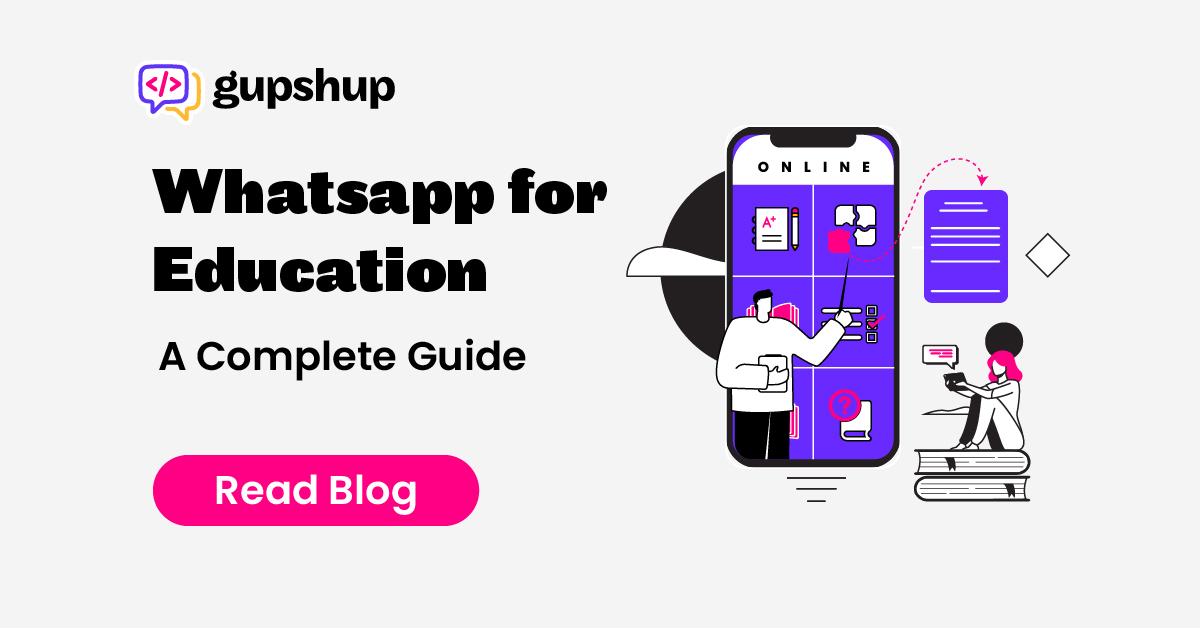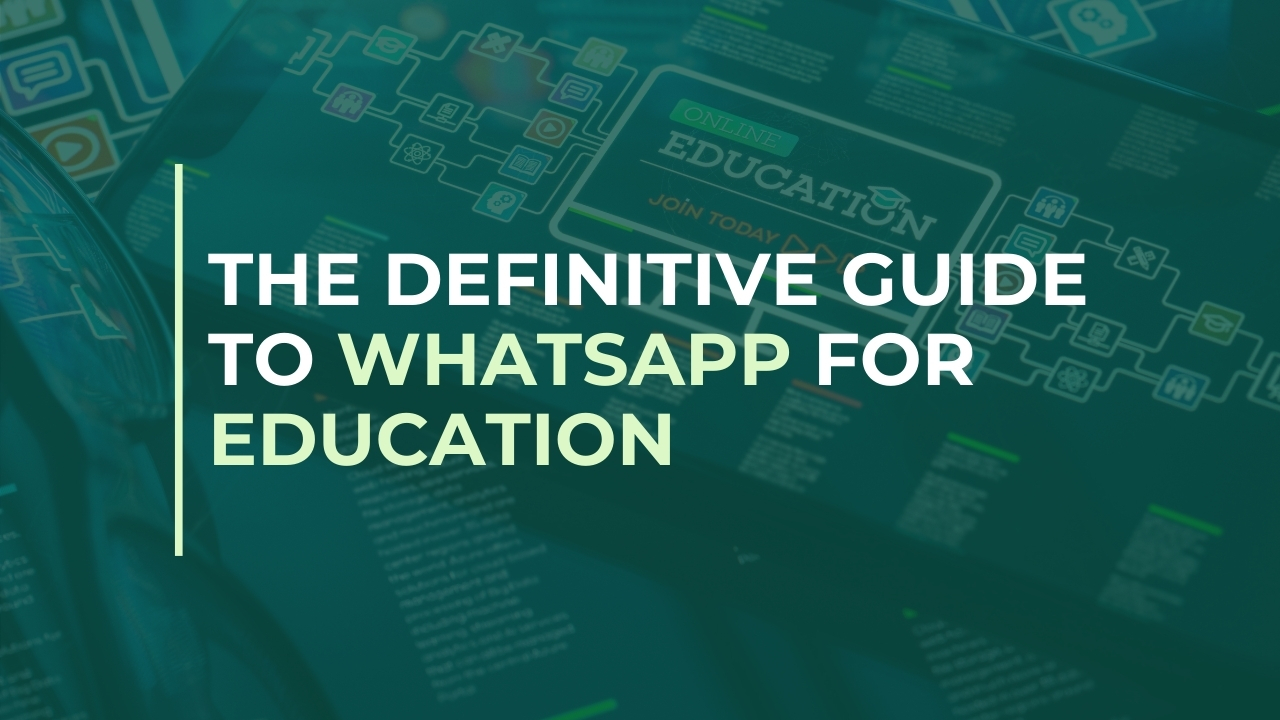In the rapidly evolving landscape of education, technology has emerged as a transformative force, empowering educators and learners alike. Among the myriad of digital tools that have made their mark in the classroom, WhatsApp stands out as a powerful platform for enhancing student engagement, fostering collaboration, and redefining learning experiences.
WhatsApp for Education is a tailored version of the popular messaging app, designed specifically to meet the unique needs of educational institutions. With its intuitive interface, diverse features, and widespread adoption, WhatsApp has the potential to revolutionize the way we teach and learn, creating more engaging, accessible, and effective learning environments.
Understanding WhatsApp for Education
WhatsApp for Education is a specialized version of the popular messaging app designed to enhance communication and collaboration in educational settings. It offers a range of features tailored to the needs of educators and students, facilitating effective learning and teaching experiences.Key
functionalities include group chats for classes and study groups, where students and teachers can engage in discussions, share resources, and collaborate on projects. The app also supports file sharing, enabling the distribution of assignments, presentations, and other learning materials. Additionally, WhatsApp for Education integrates with educational tools such as Google Classroom and Microsoft Teams, allowing for seamless integration with existing learning platforms.
Benefits of WhatsApp for Education
- Enhanced communication and collaboration between students and teachers.
- Convenient file sharing and resource distribution.
- Integration with educational tools for a comprehensive learning experience.
- Cost-effective and accessible solution for educational institutions.
Use Cases
- Class discussions and Q&A sessions.
- Group projects and collaborative assignments.
- Sharing of study materials and resources.
- Parent-teacher communication.
- Administrative announcements and updates.
Challenges
- Potential for distractions and off-task behavior.
- Data privacy and security concerns.
- Equitable access to devices and internet connectivity.
Benefits of WhatsApp for Education
WhatsApp offers a multitude of advantages for the educational landscape, fostering student engagement and collaboration. Its ease of use and widespread adoption make it an invaluable tool for enhancing learning experiences.
Enhancing Student Engagement
WhatsApp enables students to connect with educators and peers outside of traditional classroom hours. Through group chats, students can ask questions, share resources, and engage in discussions, fostering a sense of community and continuous learning.
Promoting Collaboration
The platform facilitates real-time collaboration among students, allowing them to work together on projects, assignments, and group discussions. By sharing files, images, and links, students can pool their knowledge and perspectives, enhancing their understanding and critical thinking skills.
Case Studies and Research Findings
Numerous studies have demonstrated the positive impact of WhatsApp on learning outcomes. A study conducted by the University of the West of England found that students who used WhatsApp for educational purposes reported higher levels of engagement, collaboration, and academic achievement.
Another study by the University of California, Berkeley, showed that WhatsApp helped improve student attendance and participation in online courses.
Implementation Strategies
WhatsApp for Education offers multiple implementation models tailored to diverse educational settings.
Step-by-Step Guide for Educators
1.
-
-*Plan and Prepare
Define learning objectives, identify relevant content, and determine WhatsApp group structure.
- 2.
- 3.
- 4.
- 5.
- 6.
- 7.
-*Create WhatsApp Groups
Establish separate groups for classes, discussions, and announcements.
-*Establish Group Norms
Set clear guidelines for communication, participation, and respect.
-*Share Content and Assignments
Utilize WhatsApp to distribute study materials, assignments, and multimedia resources.
-*Facilitate Discussions
Encourage student engagement through discussion threads, polls, and quizzes.
-*Provide Feedback and Support
Offer timely feedback on assignments and respond to student inquiries.
-*Monitor and Evaluate
Regularly assess student participation and adjust implementation strategies as needed.
Implementation Models and Considerations
|
- *Model |
- *Advantages |
- *Disadvantages |
|—|—|—||
*Class-Wide Group | Centralized communication, fosters community | Potential for information overload |
|
*Subject-Specific Groups | Targeted content delivery, focused discussions | Requires multiple groups for each subject |
|
*Small Group Discussions | Collaborative learning, personalized feedback | Limited participation for larger classes |
|
*Parent-Teacher Communication | Convenient updates, increased transparency | Potential for privacy concerns |
|
*Hybrid Model | Combination of group types for diverse needs | Requires careful planning and coordination |
Challenges and Solutions
While WhatsApp offers numerous benefits for education, it also presents potential challenges that need to be addressed to ensure equitable access and responsible use.
One key challenge is data privacy. WhatsApp collects and stores user data, including phone numbers, contacts, and messages. This raises concerns about the privacy and security of student information.
Data Privacy Solutions
- Implement clear data privacy policies and procedures that comply with relevant regulations and protect student information.
- Educate students and teachers on data privacy best practices, such as avoiding sharing sensitive information.
- Use end-to-end encryption to protect messages and data from unauthorized access.
Another challenge is equity issues. Not all students have access to smartphones or reliable internet connections. This can create a digital divide that disadvantages students from low-income or rural areas.
Equity Solutions
- Provide devices and internet access to students who need them.
- Offer alternative communication channels for students without smartphones or internet access, such as email or text messages.
- Create blended learning models that combine online and offline learning activities to accommodate students with different access levels.
Best Practices for Educators

To maximize the benefits of WhatsApp for Education, educators should adopt a range of best practices. These include effective communication strategies, innovative content delivery methods, and engaging assessment techniques.
Effective communication is essential for successful implementation of WhatsApp for Education. Educators should establish clear guidelines for communication, including expectations for response times and appropriate language. They should also use a variety of communication channels, such as text, voice messages, and video calls, to cater to the diverse learning styles of students.
Content Delivery Methods
WhatsApp for Education provides educators with a range of options for delivering content. They can share text, images, videos, and documents, and can even create polls and quizzes. Educators should choose the most appropriate content delivery method based on the learning objectives and the needs of their students.
For example, they might use text to share lecture notes, images to illustrate concepts, and videos to demonstrate procedures.
Assessment Techniques
WhatsApp for Education can also be used to assess student learning. Educators can create quizzes and polls to test students’ understanding of concepts, and they can use the chat feature to provide feedback and support. WhatsApp for Education also integrates with other educational tools, such as Google Classroom, which can provide educators with additional assessment options.
Integration with Other Educational Tools

WhatsApp can be integrated with various educational tools and platforms to enhance its functionality and cater to diverse learning needs.
This integration allows educators to seamlessly connect with other resources, share materials, and facilitate collaborative learning experiences. For instance, WhatsApp can be integrated with:
Google Classroom
- Facilitates the sharing of assignments, announcements, and resources with students.
- Enables real-time communication and discussion forums.
Microsoft Teams
- Provides a comprehensive suite of tools for online collaboration, including video conferencing, document sharing, and project management.
- Allows WhatsApp integration for instant messaging and notifications.
Learning Management Systems (LMS)
- Provides a central platform for managing educational content, assessments, and communication.
- WhatsApp integration enables push notifications, reminders, and direct messaging with students.
Comparison Table
The following table compares the key features of WhatsApp with those of other popular educational apps:
| Feature | Google Classroom | Microsoft Teams | LMS (e.g., Moodle) | |
|---|---|---|---|---|
| Messaging | Yes | Yes | Yes | Limited |
| File Sharing | Yes | Yes | Yes | Yes |
| Video Conferencing | No | No | Yes | Limited |
| Assignment Management | No | Yes | Yes | Yes |
| Grade Tracking | No | No | Yes | Yes |
Future Prospects
WhatsApp for Education is constantly evolving, with new features and integrations being added regularly. As technology continues to advance, we can expect to see even more innovative and groundbreaking developments in this space.One of the most exciting areas of growth is the integration of artificial intelligence (AI) and machine learning (ML).
These technologies can be used to personalize learning experiences, provide real-time feedback, and automate administrative tasks. For example, AI-powered chatbots can answer student questions, provide personalized learning recommendations, and track student progress. ML algorithms can be used to analyze student data and identify areas where they need additional support.Another
area of growth is the integration of WhatsApp with other educational tools and platforms. This will allow educators to create more seamless and engaging learning experiences. For example, WhatsApp can be integrated with learning management systems (LMSs) to provide students with access to course materials, assignments, and grades.
It can also be integrated with video conferencing tools to facilitate online classes and group discussions.As WhatsApp for Education continues to grow and evolve, it has the potential to transform learning environments in even more profound ways. It is an exciting time to be involved in this space, and we look forward to seeing what the future holds.
Emerging Technologies
The integration of emerging technologies, such as AI and ML, could further enhance the capabilities of WhatsApp for Education. Here are a few examples of how these technologies could be used:
- Personalized learning experiences: AI-powered chatbots can be used to provide students with personalized learning experiences. These chatbots can answer student questions, provide feedback on assignments, and recommend additional resources.
- Real-time feedback: ML algorithms can be used to analyze student data and provide real-time feedback. This feedback can help students identify areas where they need additional support and make adjustments to their learning strategies.
- Automated administrative tasks: AI and ML can be used to automate administrative tasks, such as grading assignments, scheduling classes, and tracking student progress. This can free up educators’ time so that they can focus on more important tasks, such as teaching and interacting with students.
Conclusion
As WhatsApp for Education continues to evolve, its potential for transforming learning environments is boundless. By embracing this innovative tool, educators can unlock new possibilities for student engagement, collaboration, and personalized learning. With its ability to bridge the gap between formal and informal learning spaces, WhatsApp empowers educators to create a truly connected and inclusive learning ecosystem, where every student has the opportunity to thrive.
Q&A
What are the key features of WhatsApp for Education?
WhatsApp for Education offers a range of features tailored to the needs of educators and students, including group chats, file sharing, video conferencing, and integration with other educational tools.
How can WhatsApp enhance student engagement?
WhatsApp’s interactive features, such as polls, quizzes, and group discussions, foster active participation and encourage students to engage with the learning material in a more dynamic and collaborative way.
What are the potential challenges of using WhatsApp for Education?
Potential challenges include data privacy concerns, ensuring equitable access for all students, and addressing the potential for distraction and misuse.
How can educators maximize the benefits of WhatsApp for Education?
To maximize the benefits of WhatsApp for Education, educators should establish clear guidelines, promote responsible use, and integrate the platform into their teaching practices in a way that aligns with their pedagogical goals.



